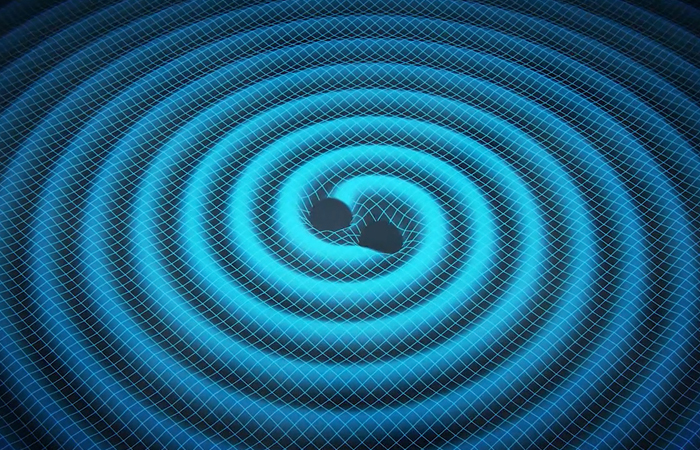People around the world celebrated the news last week that scientists at the Large Interferometer Gravitational Wave Observatory have finally detected gravitational waves — ripples in the fabric of space-time whose existence was first proposed by Albert Einstein in 1916. The waves came from two black holes circling each other, inching closer until they finally collided. The discovery paves the way for new opportunities in research — a new set of signals that previous technologies did not allow people to receive, study or learn from.
Walter Van Hamme, FIU astrophysicist and interim executive director of the School of Integrated Science and Humanity, offers insight into the elusive gravitational waves.

By Walter Van Hamme
Throw a stone in a pond and watch what happens. Circular ripples emanate out and then travel across the surface from the point where the stone first hit the water. What causes these ripples to stretch out across the water?
As the stone hits the water, it pushes the water down, away from its normal position. It bounces back to above its normal position before falling back down, creating an up and down cycle that repeats itself. This local disruption in the water starts to drag adjacent water molecules up and down, which then drag the next adjacent layer, and so on. The disturbance moves all the way across the pond, and voilà, we have a traveling wave.
If you were a creature living on the surface of the pond some distance away, you could build a device that detected the ripples passing by. A kind of small pool float might do, as you would see it bobbing up and down when a wave crested and fell. Waves are one way the natural world moves energy from one place in the universe to another. The ability of the wave to push the float up against gravity indicates that it has energy, and this energy can be seen and heard by the detectors.
Now imagine 1.3 billion light years away a binary black hole system, in which each of the black holes is roughly 30 times the mass of the sun. As the two black holes orbit each other in space, their orbits get smaller and smaller, and they move faster and faster. Approaching the speed of light, they distort space itself, and just like the disturbance of the water surface, this distortion starts to move away as ripples. We call these gravitational waves.
Albert Einstein predicted their existence almost a century ago as part of his general theory of relativity. The two black holes quickly merge and become one single black hole. The total energy lost from the system and carried away in space by these ripples amounts to 1-billion-trillion times the energy emitted by the sun in one second. 1.3 billion years later, the tiniest fraction of this energy passes by the Earth, an amount only sufficient to stretch space by less than 1-billionth the size of an atom, and the reason why scientists have struggled so long to observe them.
Detection of these waves by the Laser Interferometer Gravitational Wave Observatory (LIGO) has now been realized and was announced last week. This milestone is being hailed as one of the most exciting astrophysical discoveries in scientific history. If Einstein were alive today, we might imagine him standing on the shore of a pond, throwing a stone into the water, watching the ripples and smiling.
Tags: College of Arts Sciences & Education × Physics × School of Integrated Science and Humanity (SISH)
This post “Einstein, gravitational waves and the rippling effects of scientific discovery” was originally published on FIU News.

